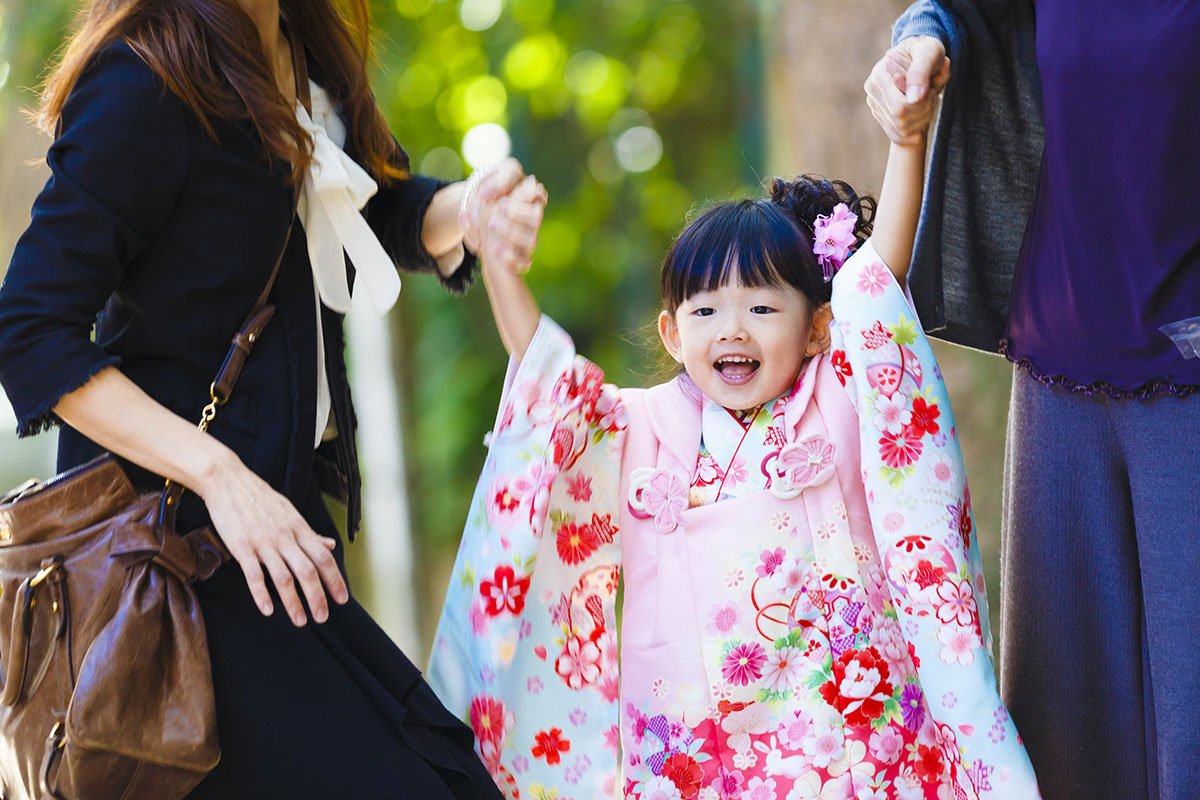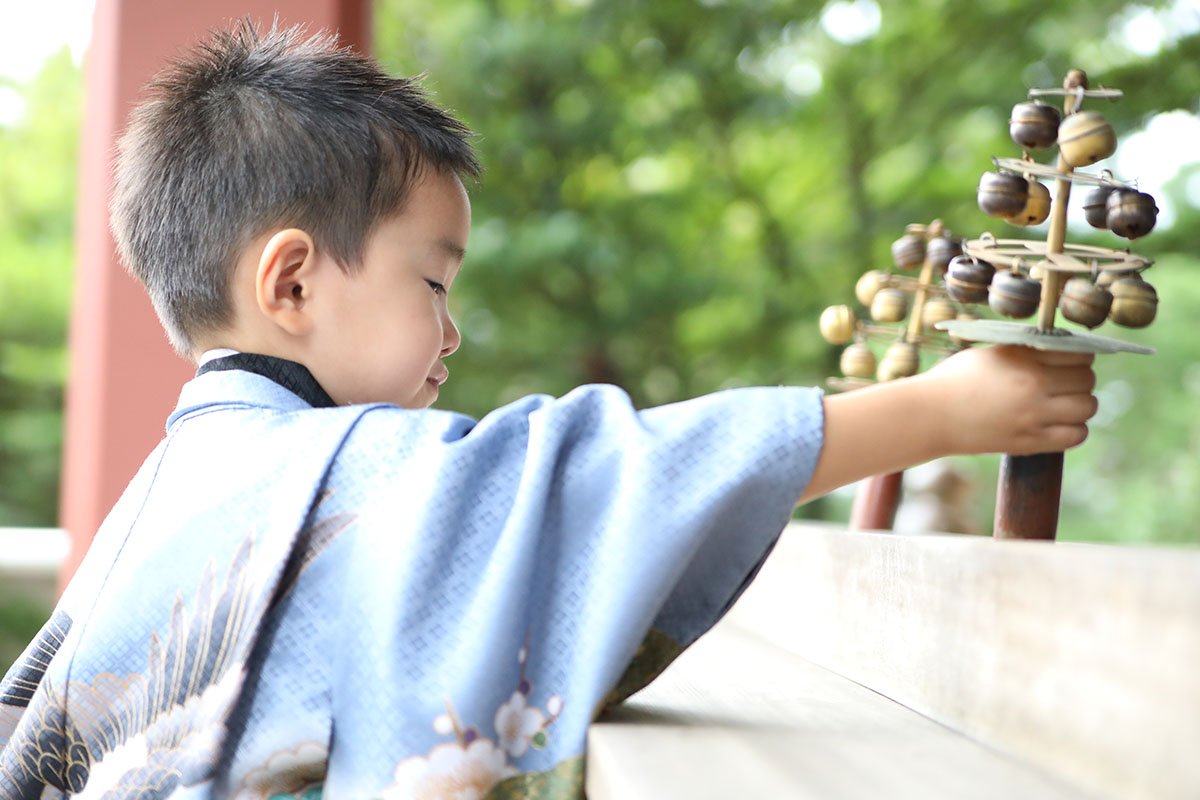When your precious child turns three years old, many families will begin preparing for Shichi-Go-San.
At times like these, many parents may wonder, "Is Shichi-Go-San always held on November 15th?"
In this article, we will explain in detail the definition of Shichi-Go-San, the origins of its celebration on November 15th, and what to consider when arranging the date for Shichi-Go-San.
What is Shichi-Go-San?

Shichi-Go-San is a traditional event that celebrates the growth of children at milestone ages of 3, 5, and 7.
The history of Shichi-Go-San
The origin of Shichi-Go-San is said to be a celebration event for children aged 3 to 7 held among the nobles who served the Emperor and the Imperial Court in the mid-Heian period.
In the past, child mortality was very high, so the meaning of the prayer had to be changed depending on age and gender, as follows:
Age 3: Kamioki
Kamioki is an event that was held from the Kamakura period to the Edo period to mark the beginning of children's hair growth.
At that time, children in noble families were raised with their heads shaved until they were two years old, and in samurai families, until they were three years old, and then they began to grow their hair out at the Kamioki ceremony. In modern times, this has evolved into a ceremony to celebrate the growth of three-year-old girls.
Age 5: Hakamagi (traditional Japanese formal attire)
Hakama-gi is a ceremony in which people put on hakama for the first time, and was already performed during the Heian period.
The wearing of hakama, which was originally practiced by both boys and girls, changed into a ceremony to celebrate the growth of five-year-old boys after the Edo period. Even today, the hakama wearing ceremony is still held for both boys and girls in the Imperial family.
Age 7: Untying your obi
This is a ceremony in which the sashes on a child's kimono are removed and the child's obi is tied for the first time so that they can be dressed in the same way as an adult.
In the past, this ceremony was held for both boys and girls at the age of 9. In the late Edo period, this changed to a ceremony held by girls at the age of 7.
The Shichi-Go-San celebration is on November 15th! What is its origin?

Shichi-Go-San has traditionally been held every year on November 15th.
However, if it is not possible to celebrate on the day, it is generally held on a convenient day between October and December.
There are several theories as to why Shichi-Go-San was chosen as the date for November 15th, as follows:
A theory about a ceremony to pray for the health of Tokugawa Tsunayoshi's son
Tokugawa Tsunayoshi's son, Tokumatsu, was a very weak child. Therefore, after praying for his health on November 15th, he grew up healthy until he was five years old. From then on, November 15th became the day for Shichi-Go-San.
Theories that it originated from Onmyodo and demons
There is also a theory that November in the lunar calendar was an auspicious month known as "Ichiyo Raifu" in Onmyodo.
Furthermore, November 15th is the "Oni-shuku day of the 27 constellations," when demons do not roam the streets, so it is said to be an auspicious day for celebrations other than weddings.
Theory that it originated from a harvest festival
On November 15th, the full moon, harvest festivals were held all over the country.
Originally, November was the month to give thanks to the gods for the harvest of the year. Therefore, on the full moon of November 15th, people began to give thanks for both the harvest and the growth of their children, and pray for the gods' protection.
Is Shichi-Go-San celebrated based on the child's age in the traditional Japanese counting system or their actual age?
As children approach the age of three, many parents tend to have questions such as, "When should we hold the Shichi-Go-San ceremony?" The answer to this question can be easily found by knowing the counting methods of age (counting age) and full age.
What are age by counting and full age?
First of all, the age reckoning system is a way of thinking in which you are considered to be 1 year old on the day you are born, and then age every time January 1st comes around.
On the other hand, full age is the way of counting age used in modern Japan. The day of birth is considered 0 years old, and with each subsequent birthday, you age. For example, if we consider November 15th as the base date, there are the following differences between counting age and full age:
- In the case of age by traditional Japanese counting: before the birthday, the child is 3 years old, and after the birthday, the child is also 3 years old
- In the case of full age: 1 year old before the birthday, 2 years old after the birthday
The timing of celebrating Shichi-Go-San in modern times
In modern Japan, it is common to celebrate Shichi-Go-San at the child's full age.
However, depending on the age of siblings or their early birth, it is okay to hold the Shichi-Go-San ceremony at a time that is unique to your family. Also, if it is difficult for parents to take time off from work, it is fine to hold the Shichi-Go-San ceremony at a time that is best for your family.
During the Shichi-Go-San period, photo studios and costume rental stores tend to be fully booked, so if you are planning to have your Shichi-Go-San ceremony in the fall, it is best to start making arrangements and preparations as early as possible.
summary
This time, we explained about Shichi-Go-San, a traditional event that celebrates the growth of children who turn 3, 5, and 7 years old.
In the olden days, when child mortality was high, ceremonies were held for each age group, with different meanings and wishes attached to them. Even today, many families hold Shichi-Go-San on November 15th. However, if you are unable to hold the ceremony on this day due to the age difference between siblings or family circumstances, you may want to check the reservation availability and find the best time for your family.
This article has been partially re-edited by KARUTA from an article originally published on "Nihongo Biyori."
Any unauthorized reproduction or use of the contents, text, images, illustrations, etc. of this website is strictly prohibited.
